The FC-PKO Survival Knife is Smaller, Lighter and One Helluva Fire Starter.
White River Knife and Tool makes purpose built blades for hunting, fishing, and survival. They don’t make folders and they don’t make overtly tactical knives, but their outdoor blades have, for more than a decade now, been winning fans in the field.
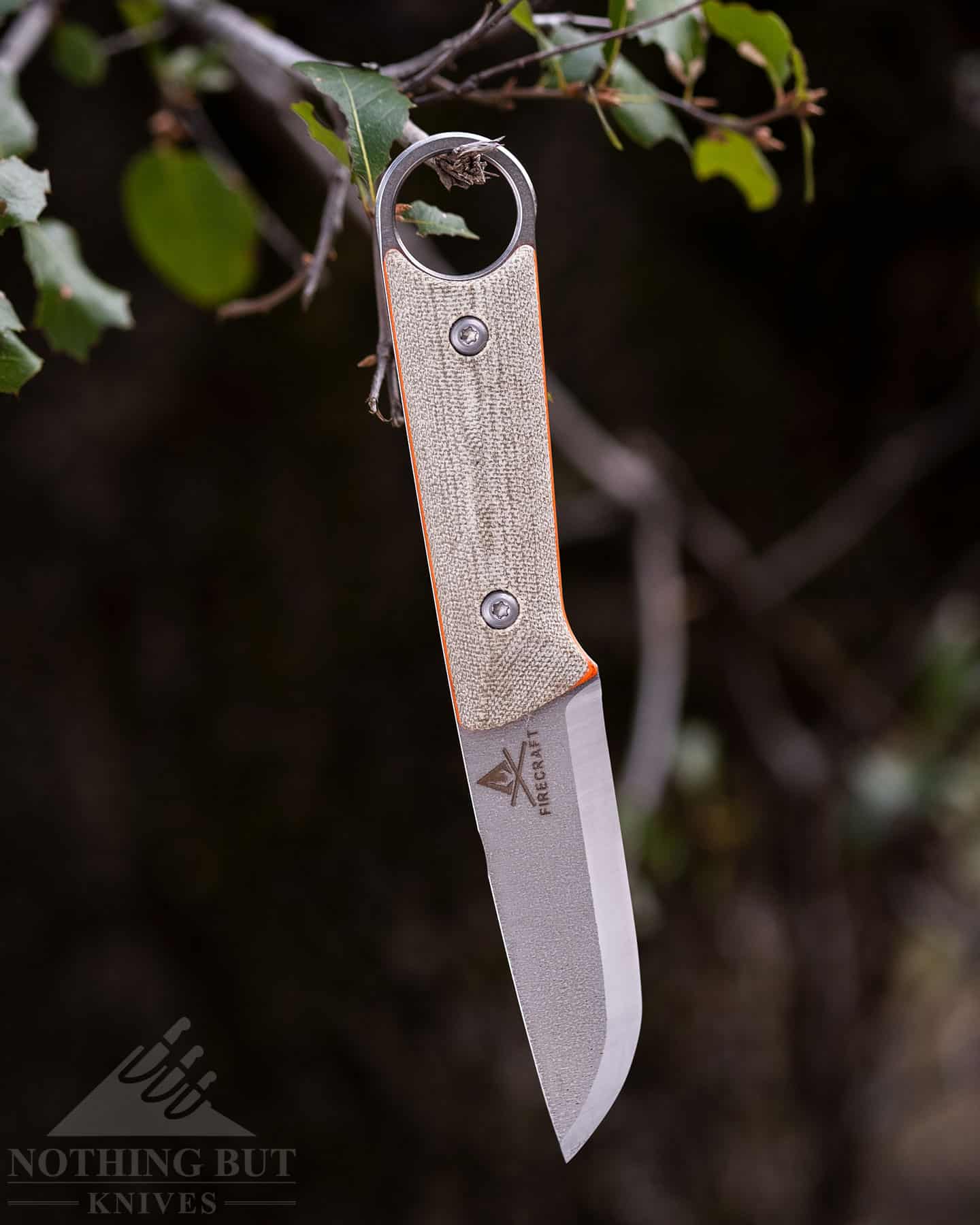
Their Firecraft series has several designs that are built with bushcraft in mind. Most of them have wide blades, good for batoning and prying apart kindling. The latest addition to the group is a Puukko inspired blade with a finger ring on the back end. The White River FC-PKO rounds out the firecraft line and adds even more versatility for those looking for an efficient survival knife.
FC-PKO Specifications
| Blade Length | 3.7″ |
| Blade Type | Drop Point, Scandi Grind |
| Blade Steel | CPM S35VN |
| Blade Finish | Textured |
| Blade Thickness | 0.125″ |
| Overall Length | 8.1″ |
| Weight | 4.6 oz. |
| Handle | Lined Micarta |
| Rockwell Hardness | 58-60 |
| Sheath | Kydex with Ferro Rod |
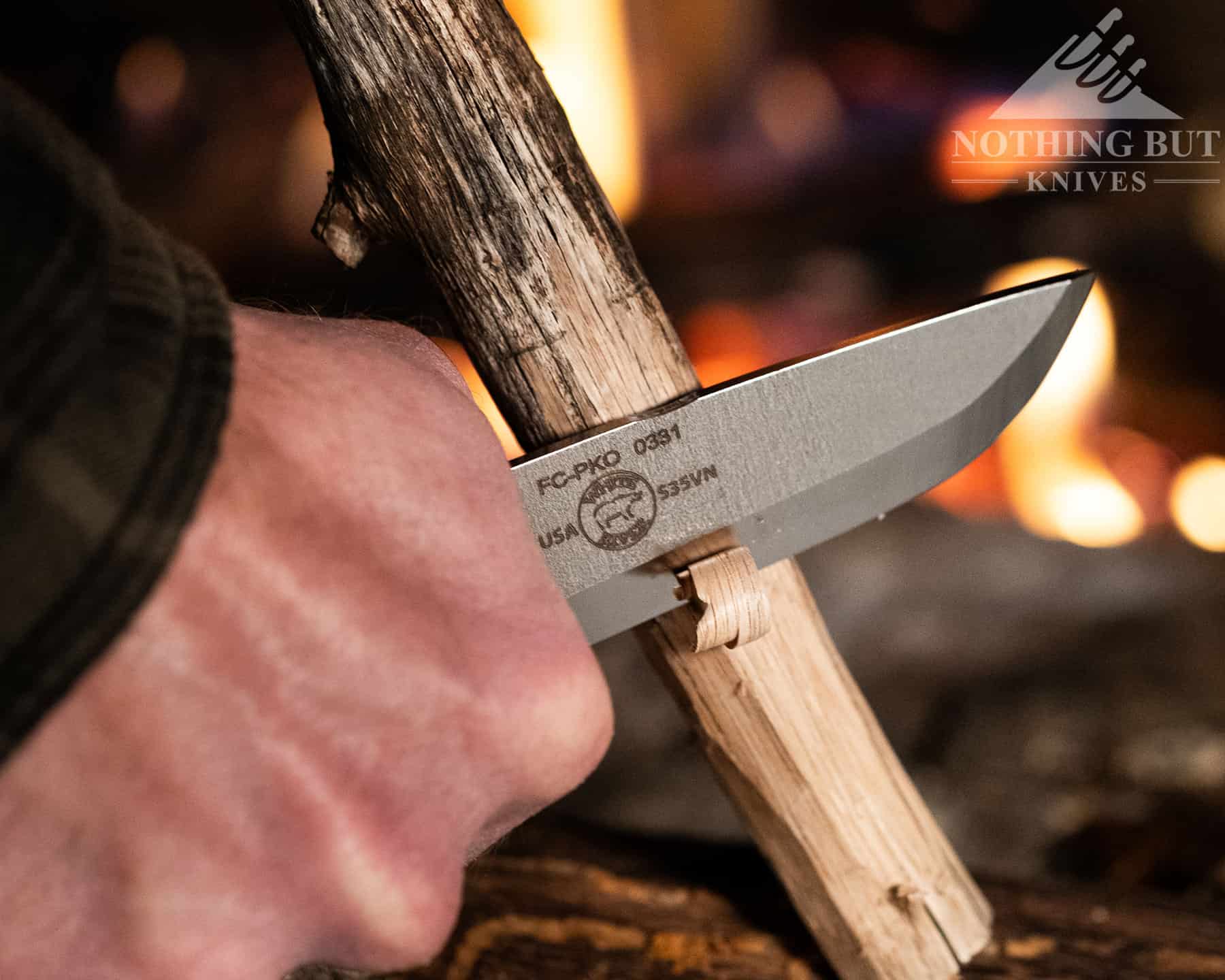
Pros
| Unlike any other production knife out there |
| Adaptable sheath |
| Excellent bushcraft knife |
Cons
| Not as many blade length options as the rest of the Firecraft line |
| Scandi grind isn’t for everyone |
Firecraft
What is firecraft, exactly? For those of us who spend our leisure time in the woods, fire craft is more than a novelty. Even if you aren’t building fires without matches, there’s an art to building a good fire. Much of the work occurs before the first spark. Enter the knife.
Depending on where you are and what kind of fuel is available, you will likely find yourself reducing larger pieces of wood to much smaller pieces of wood. Some of this can be done by scraping or shaving. Whittling off slivers works. Splitting out larger kindling. A good bushcraft knife makes the job much easier.
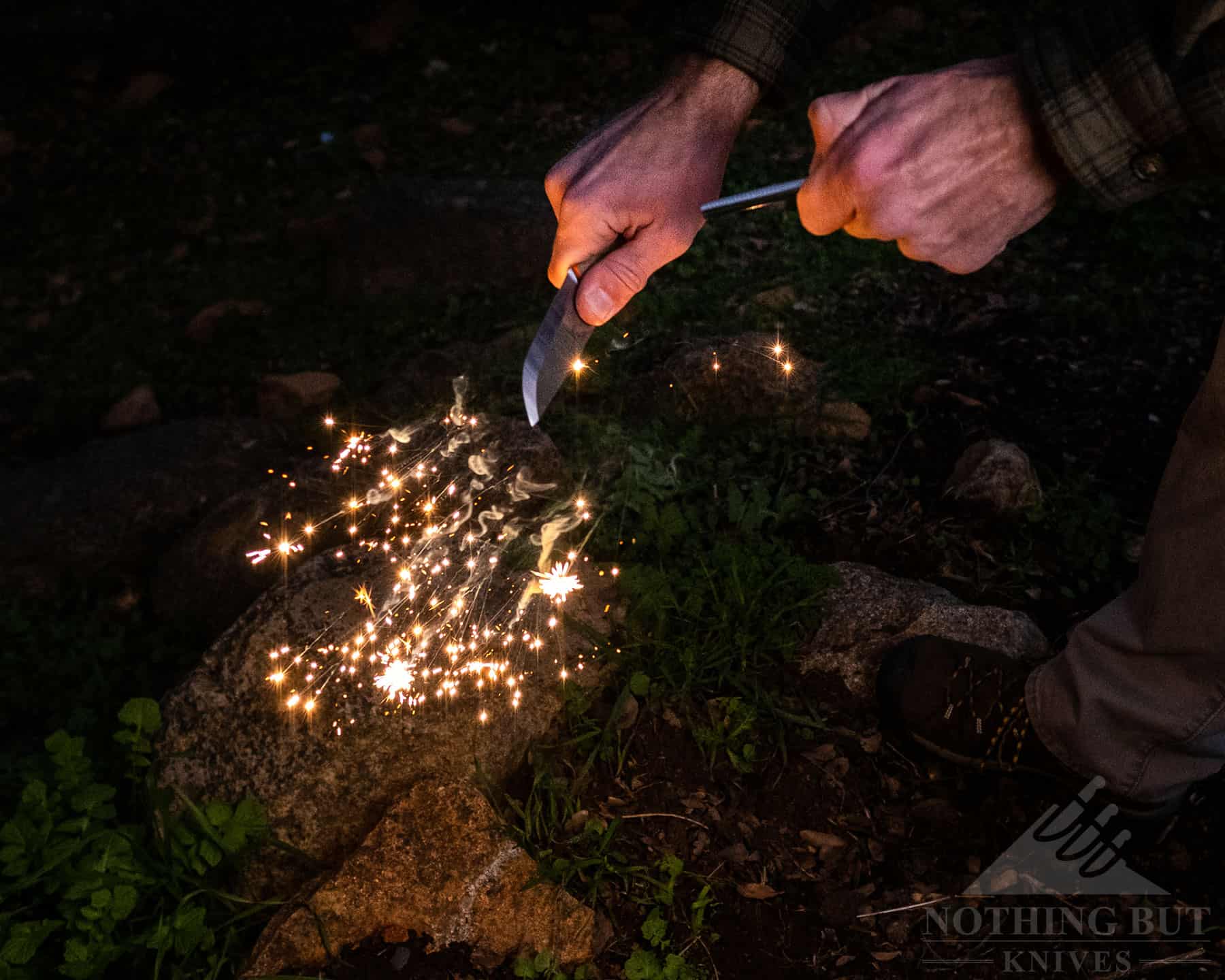
Once the foundation is ready, you are only halfway home. Ferro rods are a popular choice for DIY fire. Some, though, get all paleo and build fire bows that rely on friction to create embers that can be bedded in tinder and nurtured into a flame. Friction fire building is a reliable method and one that has been a defining aspect of the Homo Erectus, Homo Neanderthalensis, and Homo Sapiens.
It isn’t easy, but our primitive ancestors could do it. And they didn’t have CPM S35VN.
The White River Firecraft
The main attraction on the highly evolved Firecraft’s handle must be the steel bearing block embedded in the G10. While this addition has no practical use for those starting a fire with a ferro rod, it makes an excellent handle for a bow-drill or a fire bow.
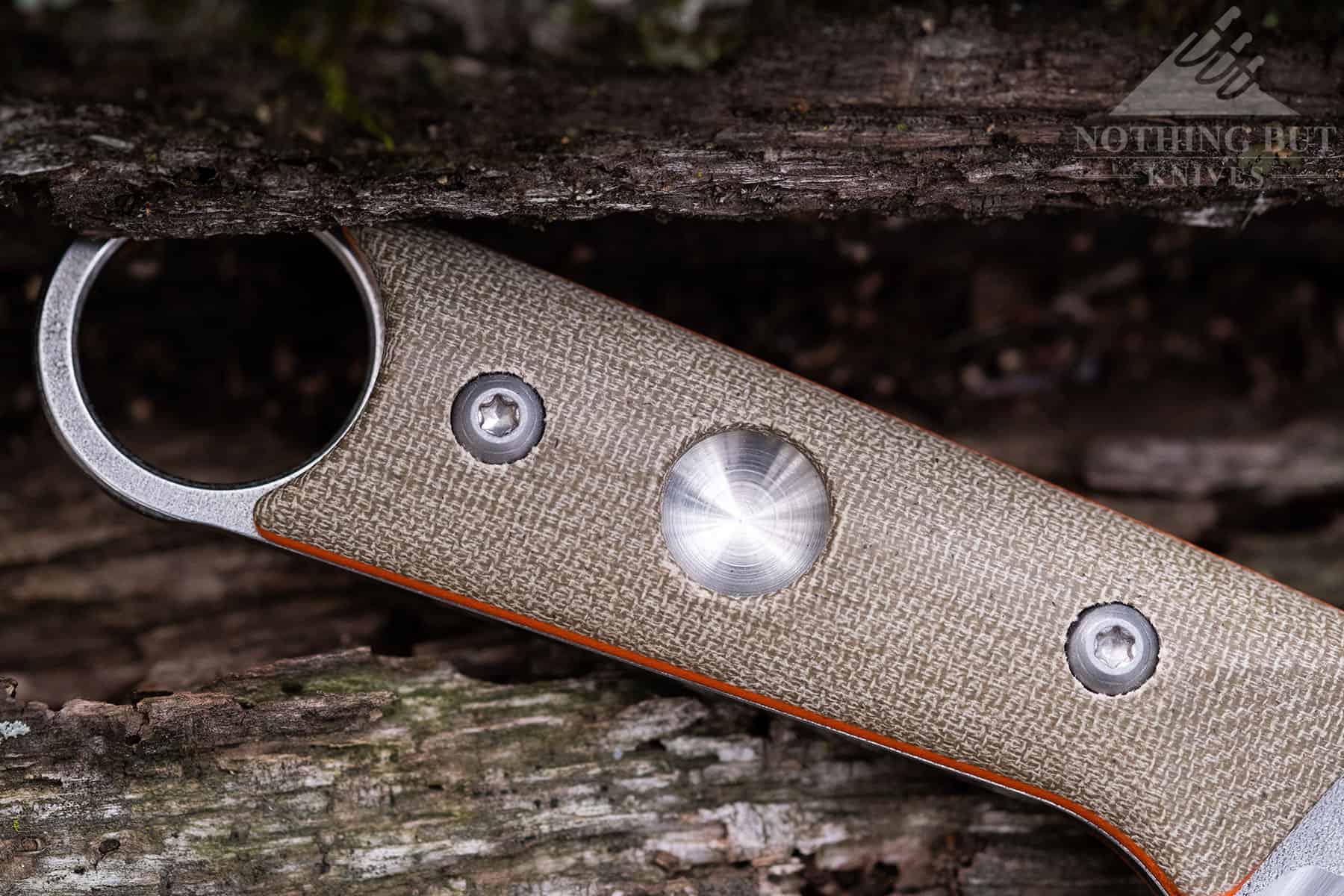
I’m talking to the hardcore buschcrafters here—those who actually make fire the primitive way, the ones who think using a ferro rod is cheating. Place the rounded end of the bow drill’s axle in this divot on the Firecraft’s handle, loop the bow string around the axle, put the point in the notch on the fireboard, and go to it.
There will be friction between the steel divot and the wooden axle. But it will be much less than the friction burning where the wooden axle meets the fireboard. After spinning the axle for a few minutes, small embers will form in the notch. With sufficient care and patience, these can be transferred into a bundle of suitable tinder and, with the addition of a bit of oxygen, may ignite.
While this is somewhat of an anachronistic skill, it is one I teach all of my Scouts. We do Wilderness Survival merit badge once a year, and they have to build three fires without matches. We use ferro rods, fire bows, and flint and steel. This one knife could assist with all three methods.
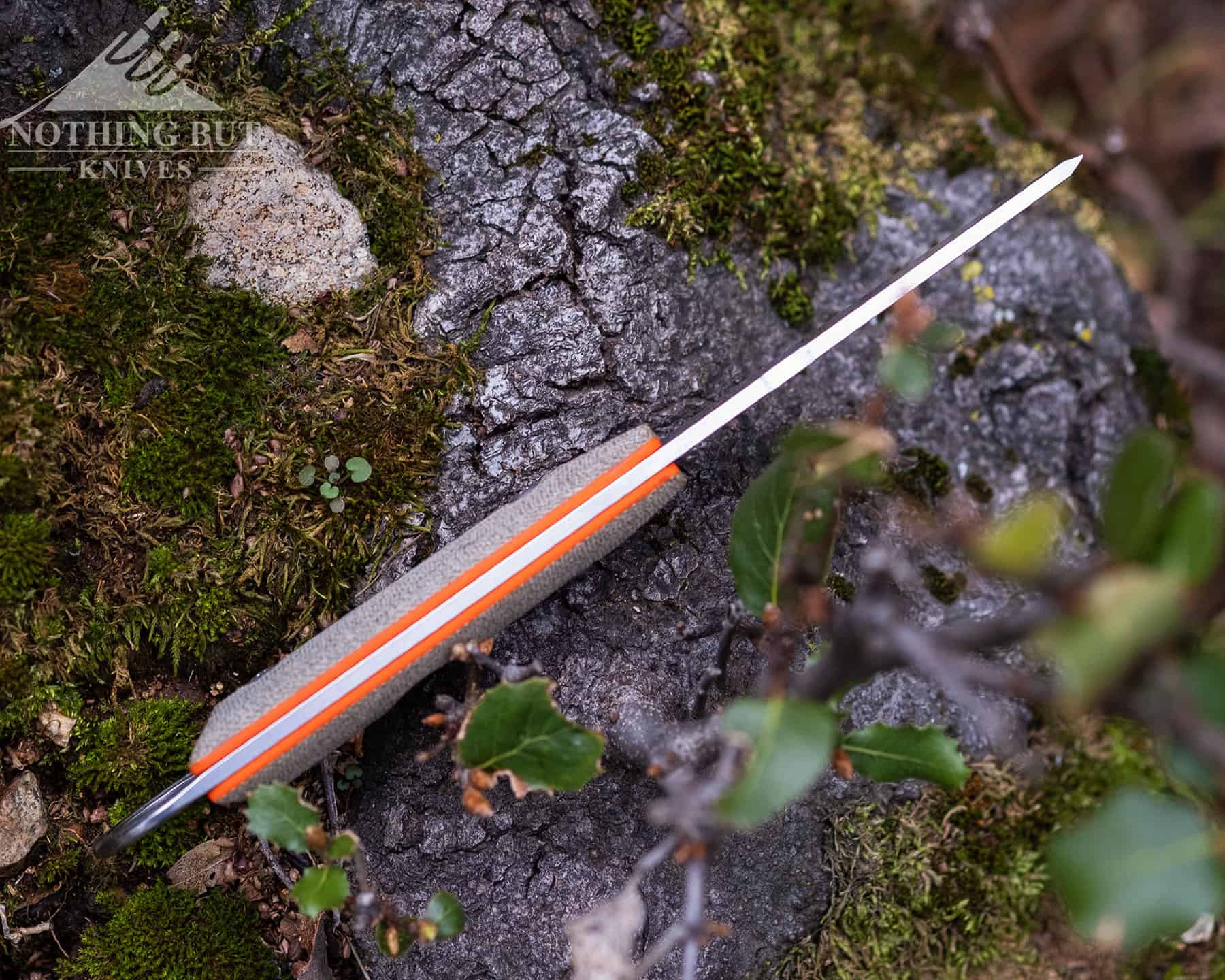
The FC PKO Handle
The rest of the handle is more typical of the genre. The full tang blade is lined with is likely acrylic. Above that thin layer of orange is a pair of micarta scales that are bolted to the blade. This allows for them to be removed. Removable scales are easier to service and keep clean.
On the FC-PKO, the handle has almost no finger stop. Just before what would be the hilt, there is a slight swell, but the FC-PKO follows the traditional lines of a Puukko more so than any of the other Firecraft series (which have much wider blades).
And that, is a suitable transition to…
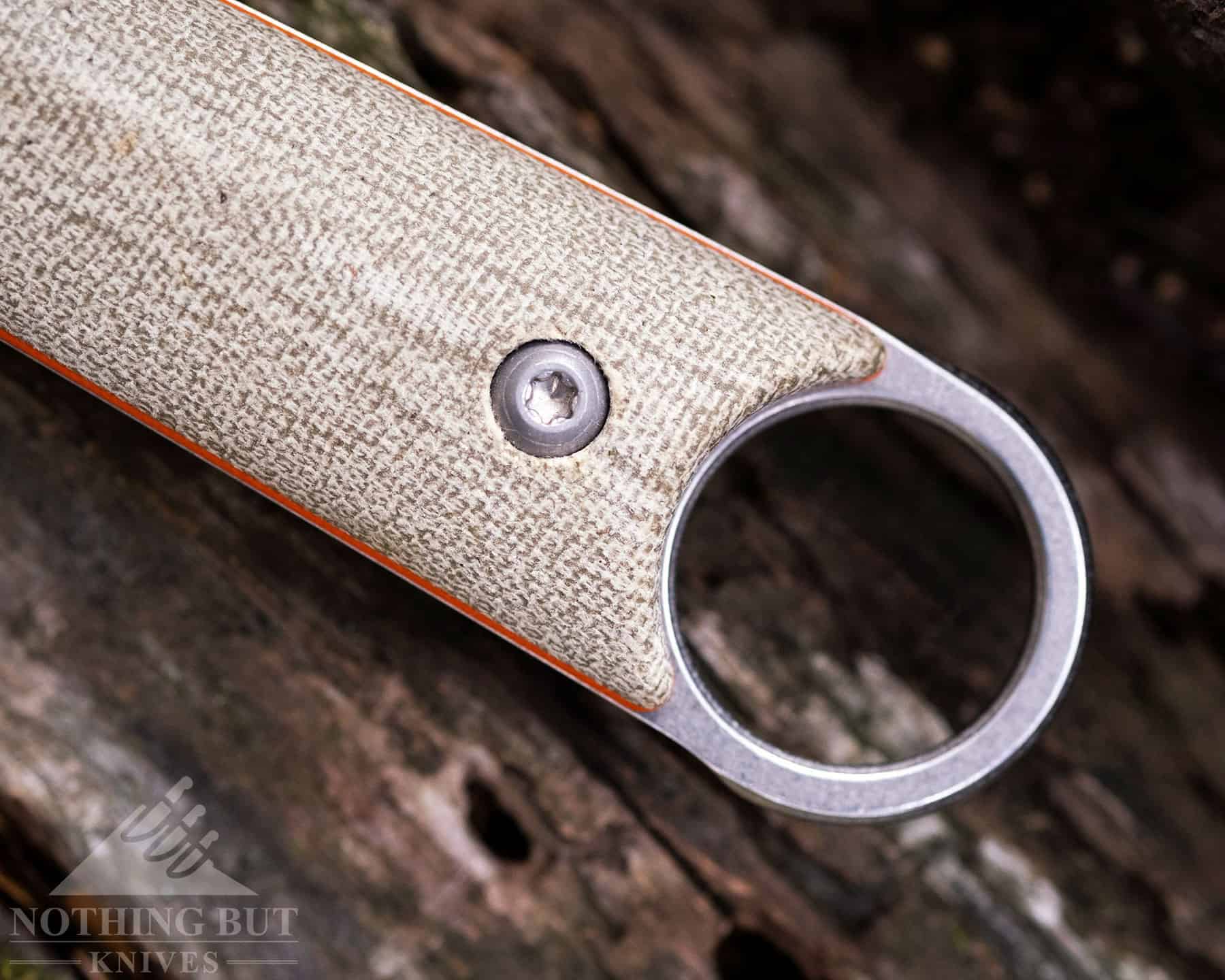
The Finger Ring
Is this a karambit? Hardly. The karambit is typically marked by both a finger loop in the handle and a recess for the following finger to sit clear of that ring. This is what makes the design such an effective striking tool—you can punch with a karambit looped on your index finger without crushing your middle finger.
This ring is easy to find, and sized to fit even large fingers. I find it best to anchor my pinky in the ring. This, more than the shape of the handle, keeps your hand from slipping forward on the blade. Anchoring the blade like this makes it a very secure grip.
As you use this as a handle for afire bow, anchor an index finger in the loop—with the bearing on the side that’s away from your palm, and you will again have a secure grip on this knife that will keep you safe.
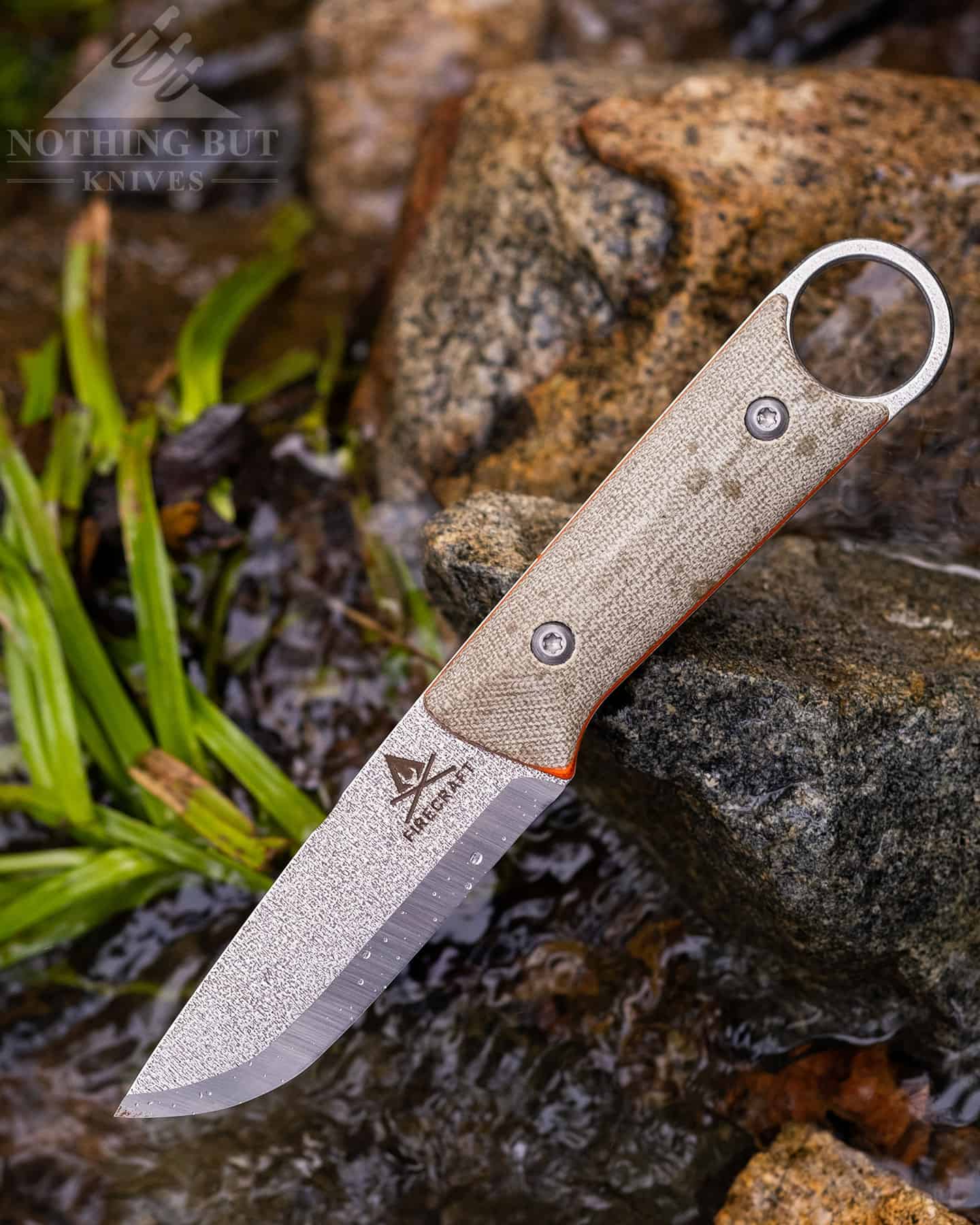
There are other uses for the ring. It makes an ideal clip point for a carabiner. The edges of the steel have been knocked back do it won’t chafe or scrape skin, or wear through a lanyard.
The FC-PKO’s Blade
CPM S35VN steel has become a standard for top tier production knives. As stainless steels go, this is one of the best. The mix of vanadium, molybdenum, niobium, carbon, and chromium is incredibly tough, holds an edge incredibly well, and provides edge hardness that puts it on par with most of the traditional carbon blade steels.
The blade shape on this knife is a worthy homage to the Puukko. From the point to the scandi grind, to the way the handle gracefully eases in to the blade, this is an American Puukko.
The scandi grind on this blade is exceptional. Without a secondary bevel, the scandi grind offers no room to hide. The edge here is flawless and wicked sharp.
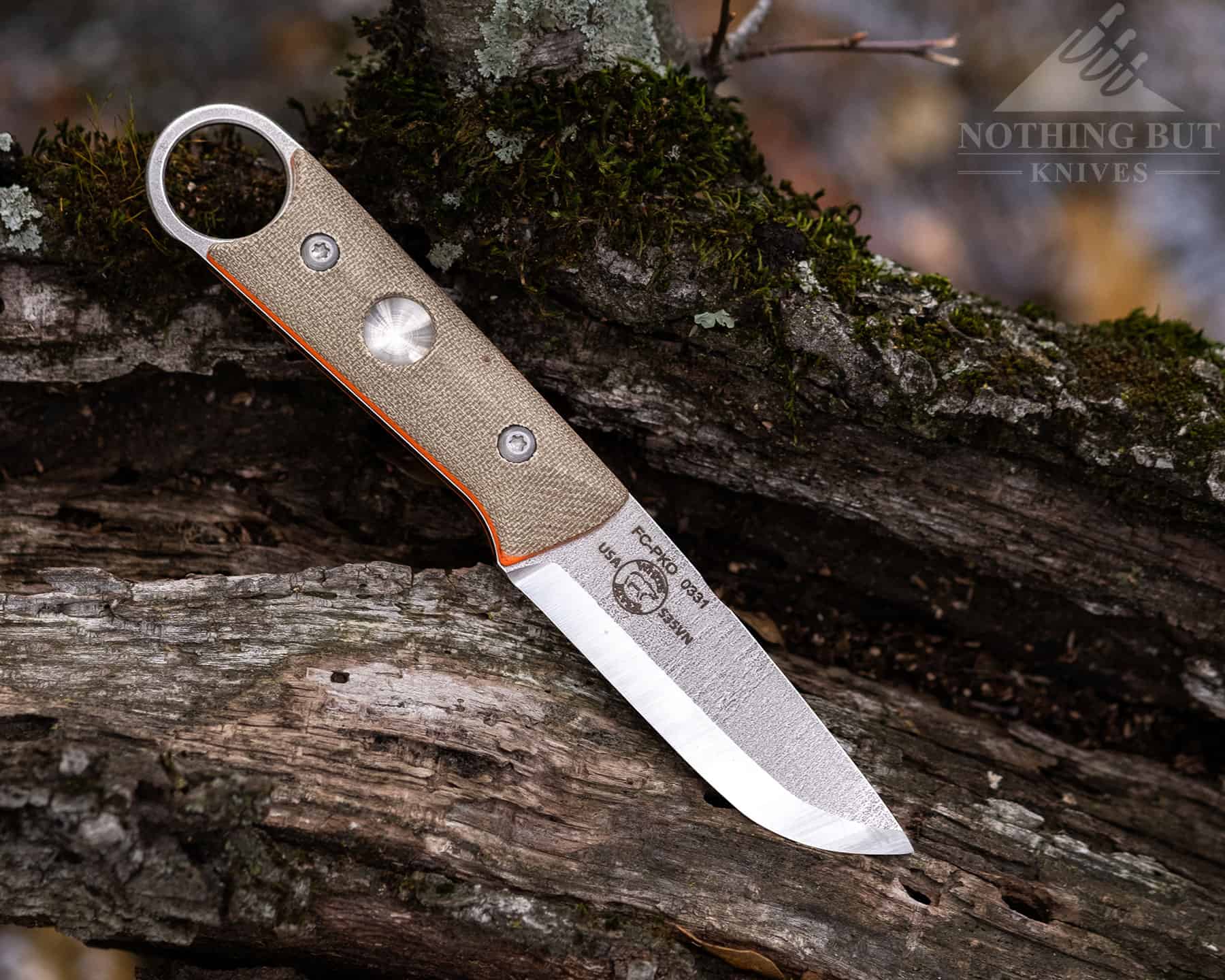
Sharpening a scandi grind is a different skill, but it isn’t as hard as it might seem. The entire bevel is placed on a stone rather than the thin edge on a blade with a secondary bevel. This takes out the guess work. I find the scandi grind to be slower to sharpen, but getting back to the fine factory edge is easier than it is for someone without much experience working on stones.
The blade is finished in with what I assume is an acid etch. The surface has some tooth. While it isn’t as aggressive as sand paper, it is textured. This will wear well, as it will prevent scratches for showing as easily, and it also provides a solid contrast to the grind of the cutting edge.
The spine is ground with sharp corners—specifically to spark the ferro rod. There’s even a concave cut in the blade to provide a larger contact area for the steel on the rod.
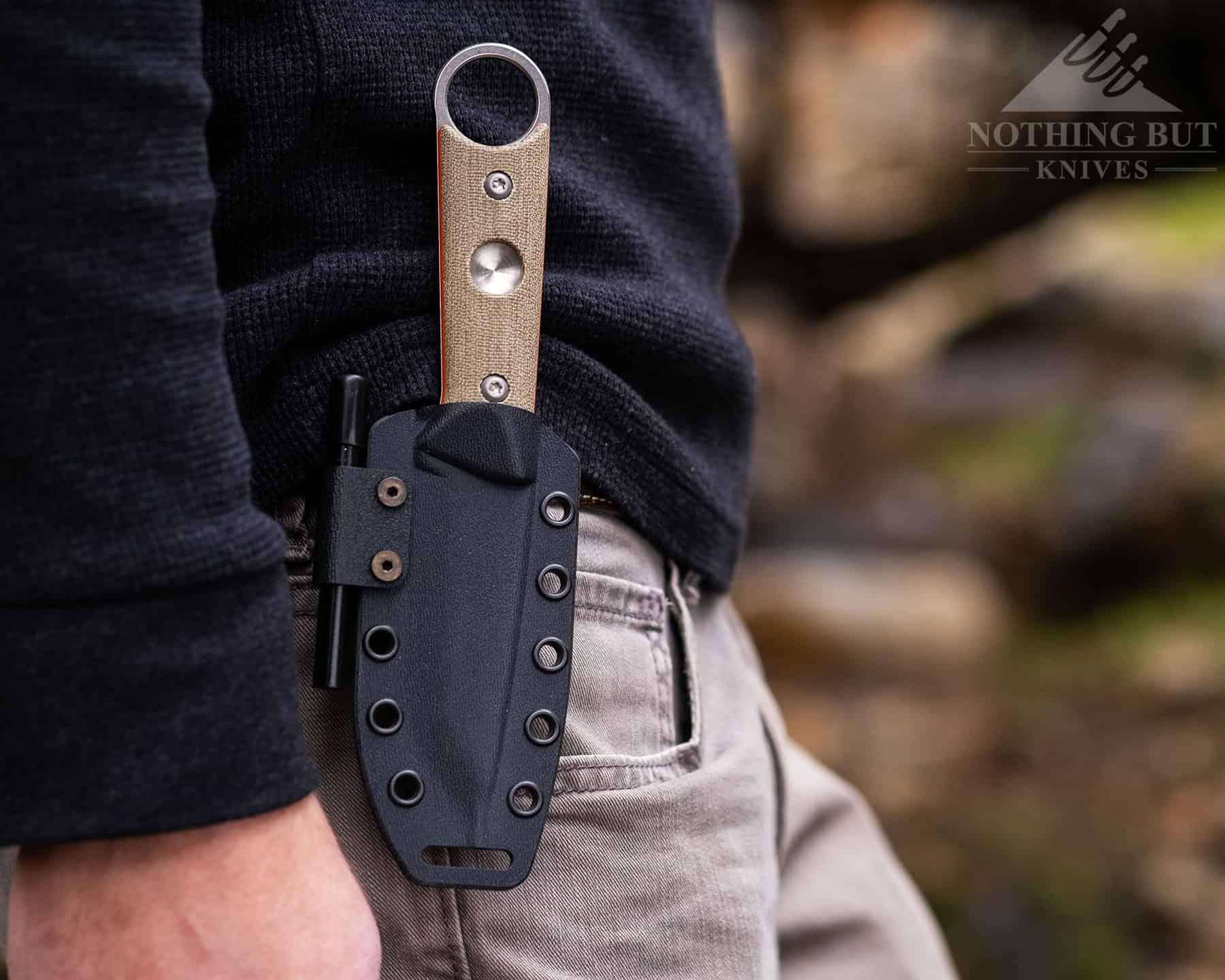
Does The Sheath Live Up To The Rest of The Knife?
Indeed it does. I’m a hard judge on sheaths. Most are an afterthought and are best tossed with the carboard box a knife comes in. Not this one.
The design is well thought out. First, there’s the attachment system. The belt loop is molded kydex, and it can be secured to the eyelet rivets on the kydex sheath in a variety of positions, making this an ideal candidate for either vertical or horizontal wear for both lefties and the rest of us.
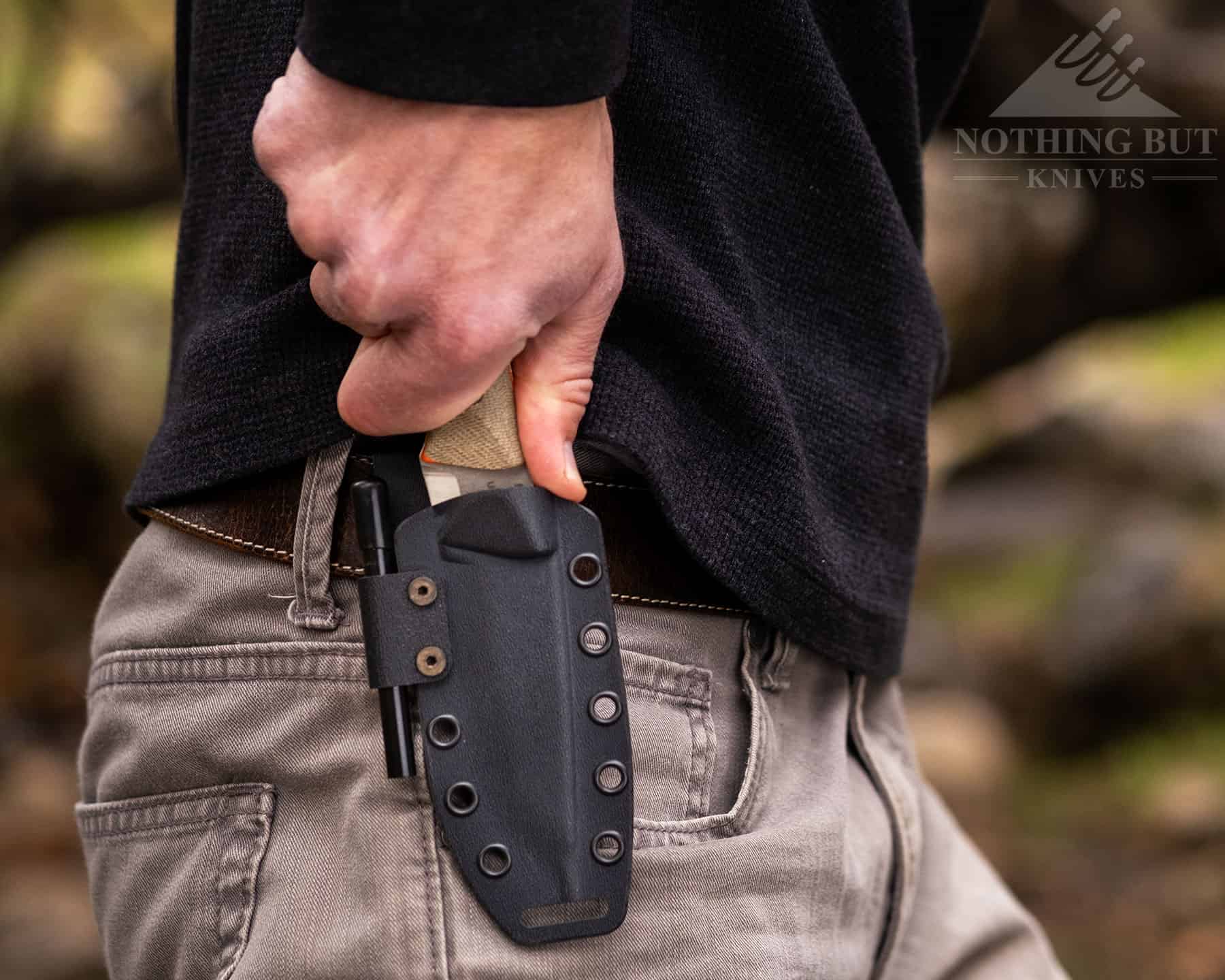
The ferro rod is secured to the opposite side by the same hardware that holds on the belt loop. The way these holes are positioned, the ferro rod and belt loop should both have two points of attachment in most of the configurations.
The knife clicks into the sheath easily, and draws easily, but isn’t going to pop free from the sheath accidentally. The front edge of the sheath has a thumb ledge, too, for extra leverage. The sheath on this one is plain black—that might be my only complaint there. With the micarta scales, I would like to see an earth tone to the plastics.
With the belt loop attachment system, though, this is an adaptable design. You
The Box
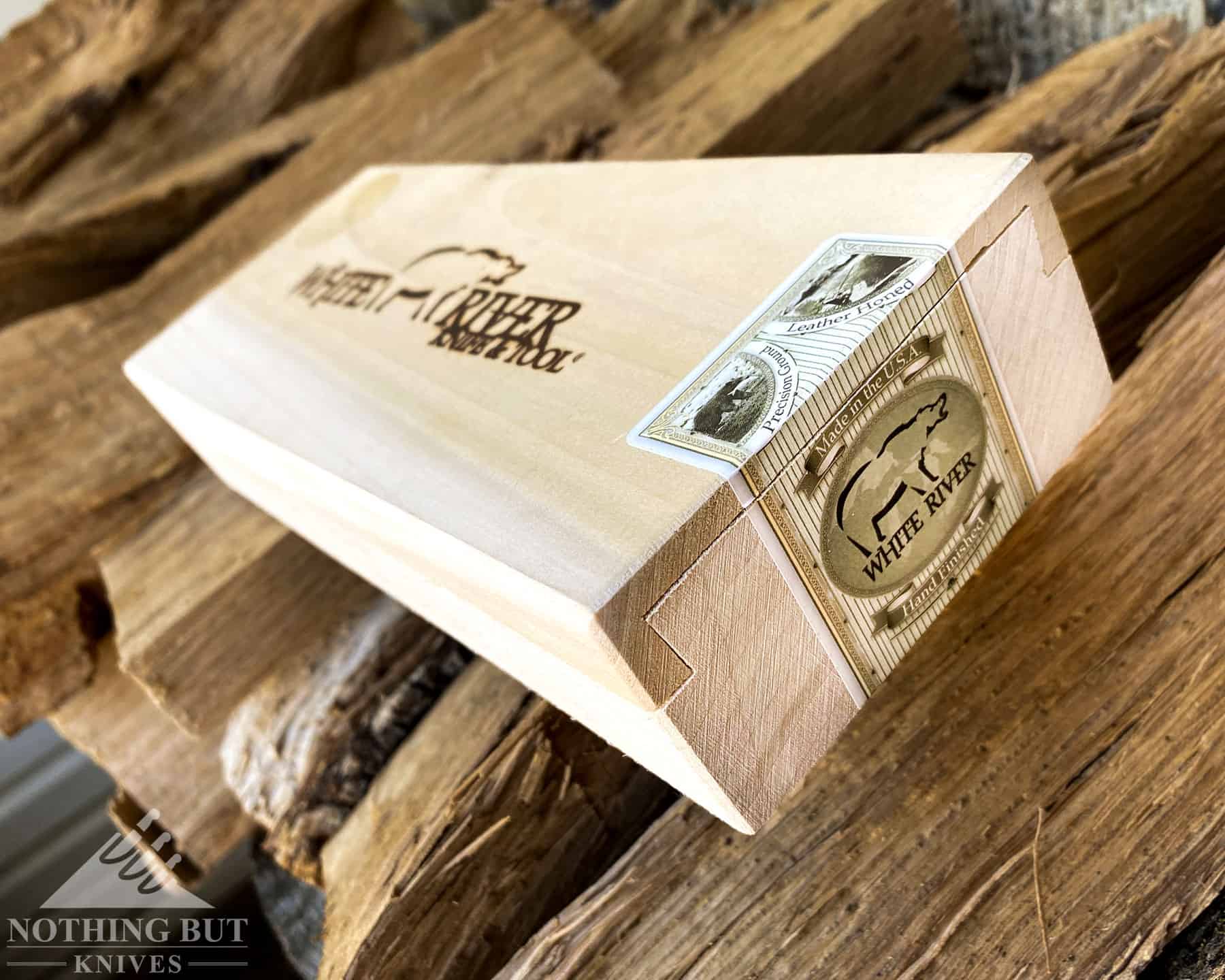
Part of my professional identity at my day job is to advise on packaging. As such, I’m a student of what works and why, and this is by far the best packaging I’ve ever seen. White River has gone above and beyond with this.
The box appears to be poplar. The wood is soft, and not overly finished. The knife fits well inside and it hangs in perfectly. When you open the box, the knife is there on top, while the paperwork and manual are below.
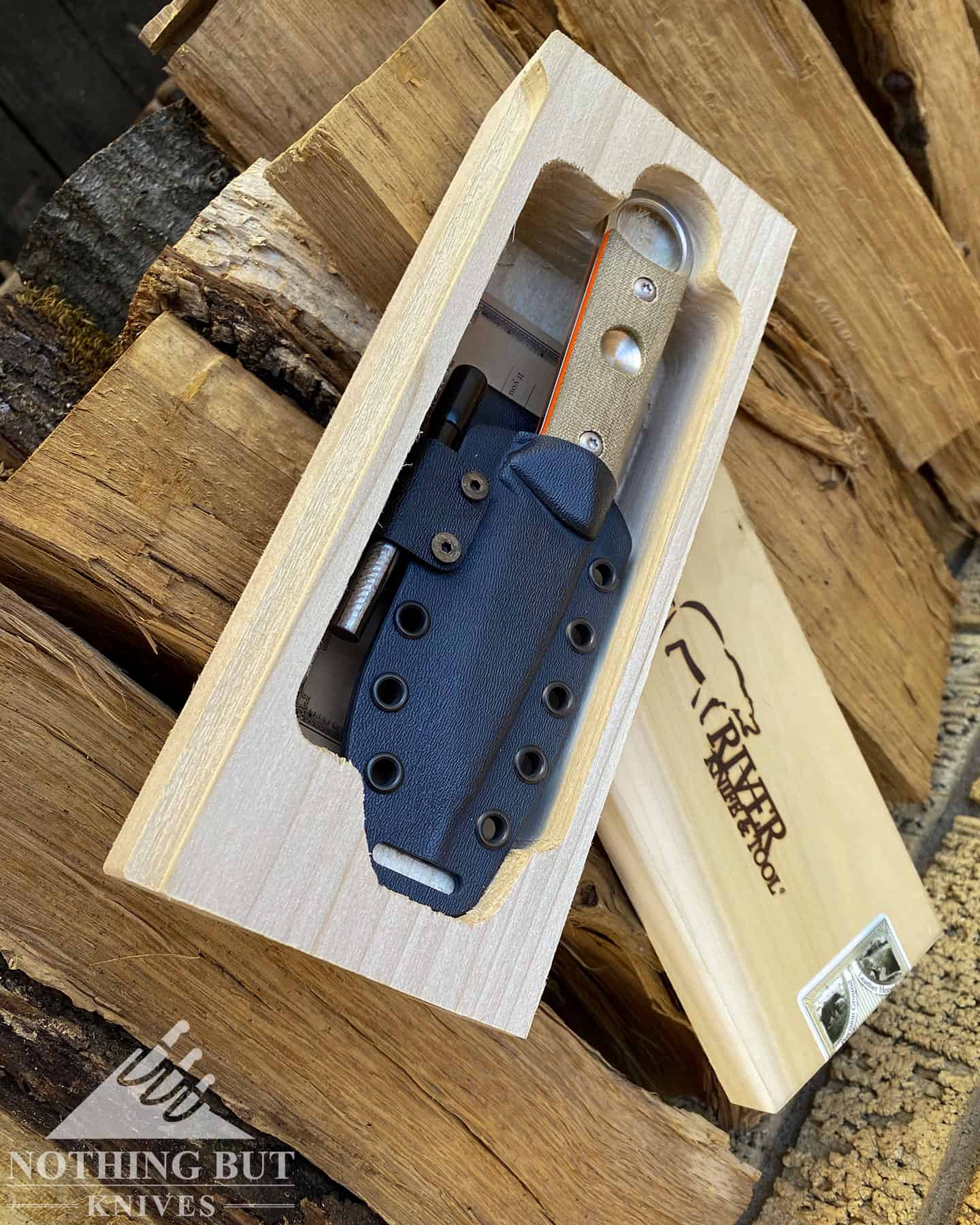
The dovetail slides easily, yet there’s virtually no play as it moves in and out. At the end, the lid seats perfectly. When closed, the box looks very much like a box of wood.
Final Thoughts
The Firecraft is, for me, in a rare and select group of almost perfect outdoor knives. Most knives are overbuilt, or too long, or heavy. Not this one. There’s enough knife here to do serious work. From processing a whitetail to actually making fires the old old fashioned way, the FC-PKO’s potential seems limitless.
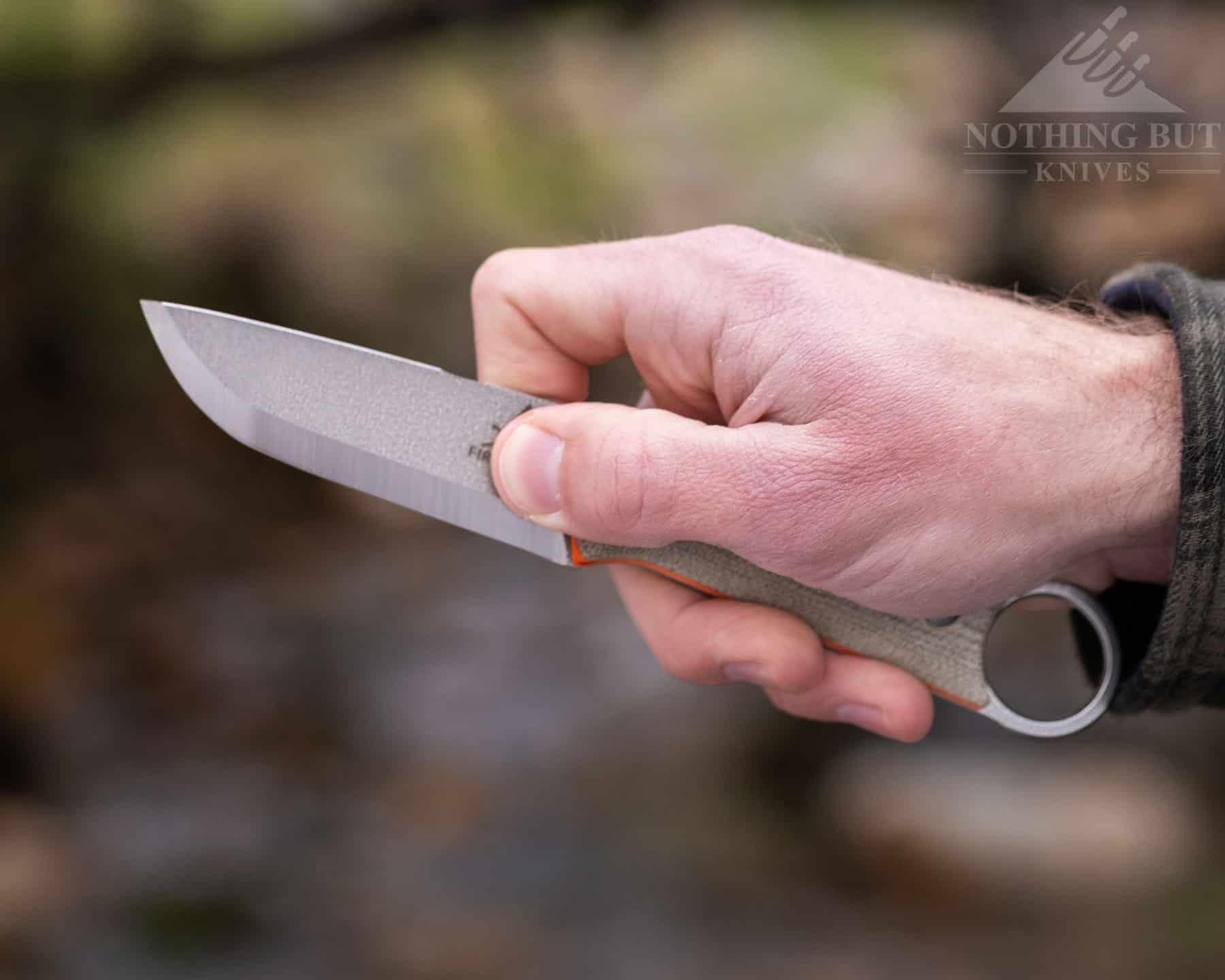
Unlike some of the other knives on the shortlist of knives I would carry when my life depended on them most, the Firecraft does have a learning curve. And this version is even more nuanced. The ring on the end, its scandi grind, even the Puukko shaped of the handle and blade—all will be new to some. Yet each piece of this puzzle is purposeful, and gives this survival knife an edge over the rest.
